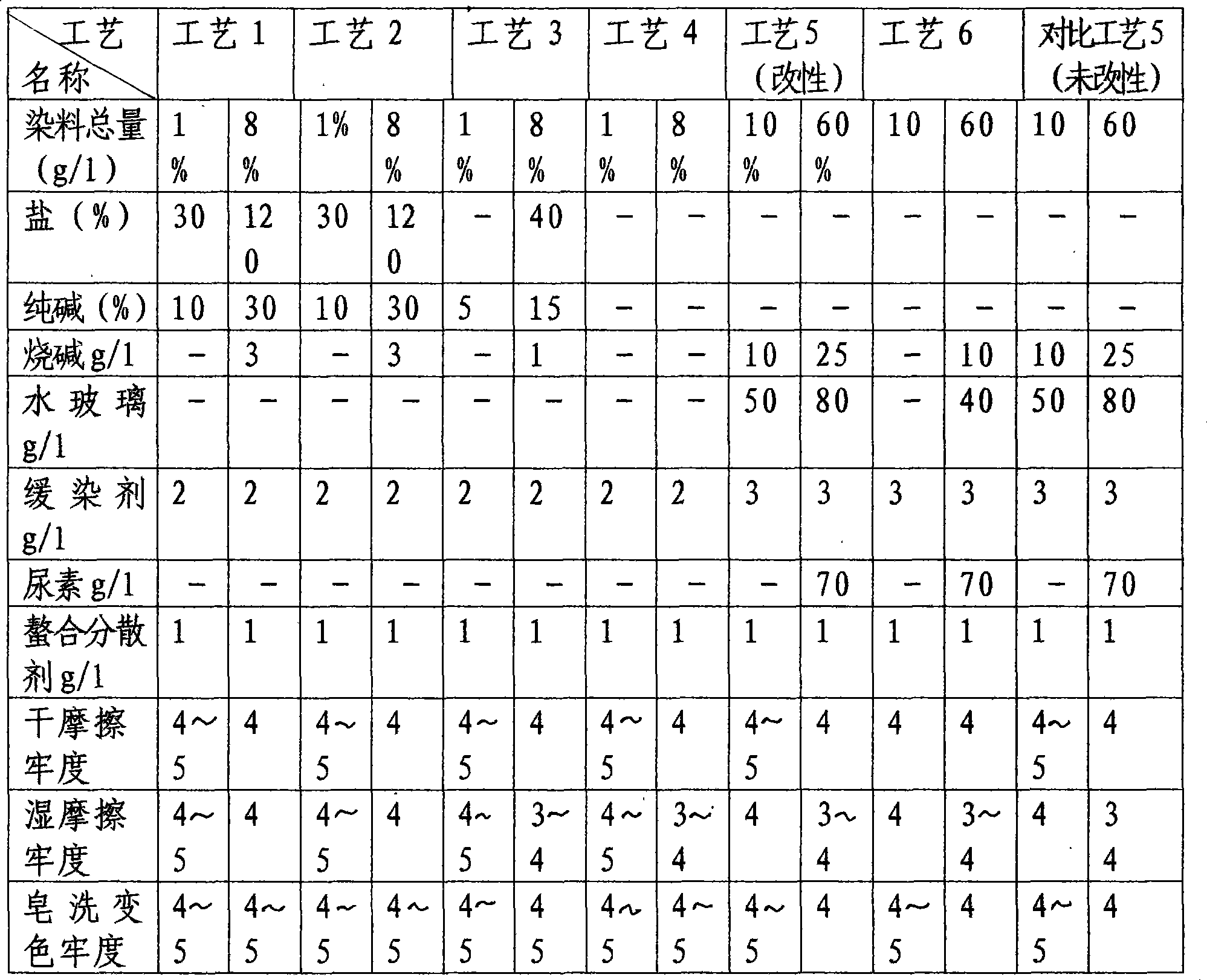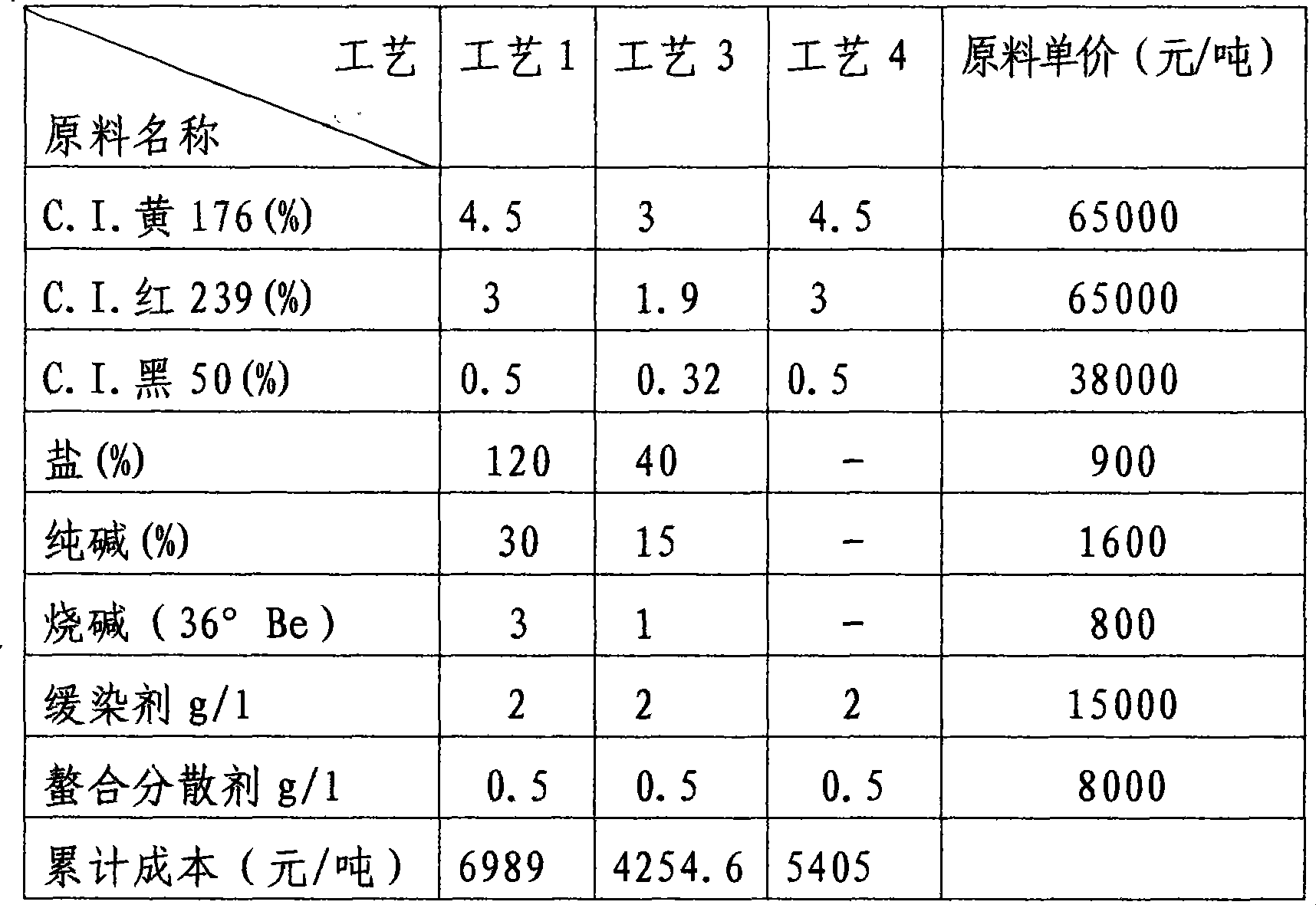Salt free dyeing with reactive dye
A reactive dye and process technology, applied in the field of textile bleaching and dyeing, can solve problems such as long time
- Summary
- Abstract
- Description
- Claims
- Application Information
AI Technical Summary
Problems solved by technology
Method used
Image
Examples
Embodiment Construction
[0053] The specific embodiments of the present invention are given below in conjunction with the accompanying drawings, and the described embodiments do not limit the application scope of the present invention.
[0054] Example 1: Intermittent bleaching and dyeing of cotton knitting gray cloth by high temperature and high pressure rope dyeing machine,
[0055] (1) Pretreatment and modification step-by-step, one-bath, same-bath treatment process
[0056] Process formula (owf):
[0057] Hydrogen peroxide 8% Caustic soda (36°Bc) 3% Hydrogen peroxide stabilizer 2%
[0058] Modifier 4% Refining agent 1.5%
[0059] Bath ratio: 1:10 100℃×45min
[0060] (2) Dyeing
[0061] Dyeing formula (owf):
[0062] Total dyestuff 4% Retarding agent 2-3%
[0063] Penetrant 1% Chelating Dispersant 0.5%
[0064] Dyeing process and process: Add modified cotton cloth at room temperature (bath ratio: 1:10) 10--leveling agent 15min--dye 15min--2°C / min to 60°C×10min-add alkali 60°C×45min - Draini...
PUM
 Login to View More
Login to View More Abstract
Description
Claims
Application Information
 Login to View More
Login to View More - R&D
- Intellectual Property
- Life Sciences
- Materials
- Tech Scout
- Unparalleled Data Quality
- Higher Quality Content
- 60% Fewer Hallucinations
Browse by: Latest US Patents, China's latest patents, Technical Efficacy Thesaurus, Application Domain, Technology Topic, Popular Technical Reports.
© 2025 PatSnap. All rights reserved.Legal|Privacy policy|Modern Slavery Act Transparency Statement|Sitemap|About US| Contact US: help@patsnap.com


